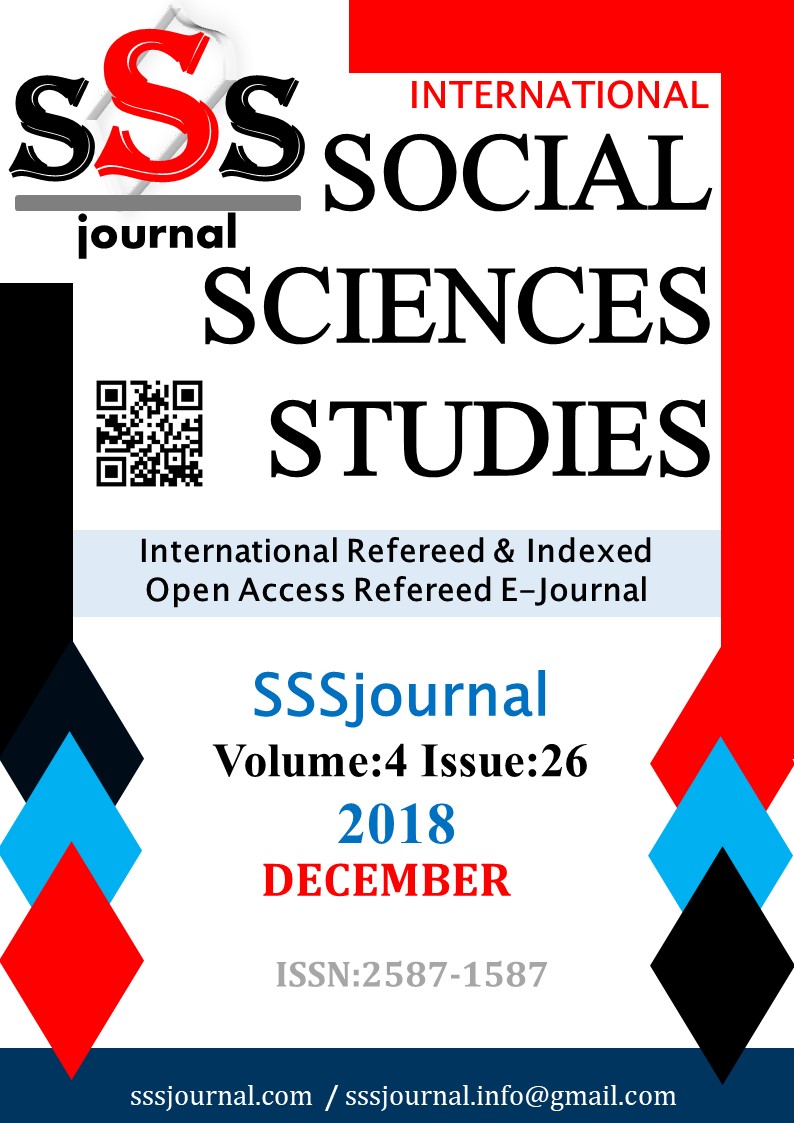Author :
Abstract
Çerçeveleme etkisi, kişilerin aynı olay ya da duruma karşı yaptıkları seçimlerin, olayın sunuluş tarzına göre etkilendiği bilişsel bir yanlılık örneğidir. Sunulan önerme kazancı ön plana çıkaran, pozitif bir çerçevedeyse kişiler riskten kaçınma eğilimi gösterirken, sunulan önerme kayıpları öne çıkaran negatif bir çerçevedeyse kişilerin risk arama eğilimi gösterdikleri gözlenmektedir. Tversky ve Kahneman’ın (1981) senaryo olarak bir hastalık sonucu, kişilerin yaşamanı yitireceği ya da kurtarılabileceğine dönük karar vermeyi içeren “Asya hastalığı” problemi karar vermede çerçeveleme etkilerinin ortaya konduğu klasik çalışmalarında kullandıkları problemlerden bir tanesidir. Ancak yapılan bu çalışmada kişilere seçmeleri için sunulan alternatiflerin sunuluş sırasının dengelenmesine dönük bir çalışmaya literatürde rastlanılmamıştır. Çerçeveleme etkisinin ortaya çıkmasında, kazanç ya da kaybı ön plana çıkaran önermelerin yer alması yanında, kişilere sunulan şıkların sunum sıralarının değiştirilmesi verecekleri karar üzerinde bir etki eder mi? Araştırmanın temel amacını bu soru oluşturmaktadır. Bu amaçla oluşturulan iki gruptan birine standart Asya hastalığı problemi sunulmuş, diğer gruba ise problemin şıklarının sunuş sıralarının değiştirildiği versiyonu sunulmuştur. Öncelikle Asya probleminin temel varsayımı olarak çerçeveleme etkisi ile kazancın ön planda tutulduğu önermenin, kaybın ön planda tutulduğu önermeye göre daha çok tercih edildiği sonucu yinelenmiştir. İkinci olarak araştırmanın temel hipotezi olan, önermelerin sunum sırasının değiştirilmesinin çerçeveleme etkileri üzerinde anlamlı bir fark yaratmadığı görülmüştür. Çerçeveleme etkisinin karar verme üzerinde tek başına güçlü bir etki yaratmaya yeterli olduğu görülmüştür
Keywords
Abstract
The framing effect is an example of cognitive bias in which the choices that people make against the same event or situation are influenced by the manner in which the event is presented. While the proposition proposes a positive outlook, the people tend to avoid risk, while the proposal suggests a tendency to look for risk in a negative framework that highlights the losses. Tversky and Kahneman's (1981) Asian disease problem is one of the problems they used in framing effects of decision making in their classical studies. However, in this study, a study for counterbalancing the order of presentation of the alternatives offered to people was not found in the literature. In the emergence of the framing effect, besides the inclusion of propositions that bring gain or loss to the fore, does changing the order of presentation of the ones presented to people have an effect on the decision they will give? This question constitutes the main purpose of the research. A standard Asian disease problem was presented to one of the two groups, and the other group was presented with a version of the problem that changed the order of presentation. Firstly, as the basic assumption of the Asian problem, it is reiterated that the framing effect and the proposition where the gain is prioritized are more preferred than the proposition that loss is prioritized. Secondly, it was seen that changing the order of presentation of the propositions, which is the basic hypothesis of the research, did not make a significant difference on the framing effects. It has been found that the framing effect is sufficient to make a strong impact on decision-making alone.
Keywords
- Arkes, H., R. (1991). Costs and Benefits of Judgment Errors: Implications for Debiasing, Psychological
- Arkes, H., R. (1991). Costs and Benefits of Judgment Errors: Implications for Debiasing, Psychological Bulletin, 110, 486–498.
- Bartels, L., M. (1998). Democracy with attitudes. Paper presented at the annual meeting of the American Political Science Association, Boston, MA, September 3–6.
- De Bruin, W., B. (2010). Framing effects in surveys: How respondents make sense of questions we ask. InG. Karen (Ed). Perspectives on framing (Society for Judgment and Decision Making Series). London, UK: Taylor & Francis.
- Druckman, J., N. (2001). The implications of framing effects for citizen competence. Political Behavior, 23, 225-256.
- Druckman, J. N. & McDermott, R. (2008). Emotion and the framing of risky choice. Political Behavior,30, 297-321.
- Ergör, B., Z. (2017) Yatırımcı Davranışları ve Karar Vermede Çerçeveleme Etkisi: Türkiye’de Yaşayan Karar Vericiler Üzerine Bir Çalışma. Bankacılık ve Sigortacılık Araştırmaları Dergisi, 2(11), 8-20.
- Kahneman, D., Tversky, A. (1979). Prospect theory: An analysis of decision under risk. Econometrica 47 (2), 263-92.
- Keysar, B., Hayakawa, S., L., Gyu An, S. (2012). The foreign-language effect: Thinking in a foreign tongue reduces decision biases. Psychological Science, 23, 661-668.
- Kühberger, A. (1995). Framing effects: A new look at old problems. Organizational Behavior and Human Decision Processes, 62, 230-240.
- Lauriola, M., Russo, P., M., Lucidi, F., Violani, C., Levin, I., P. (2005). The role of personality inpositively and negatively framed risky health decision. Personality and Individual Differences, 38, 45-59.
- Mayer, N., D. & Tormala, Z., L. (2010). Think versus Feel, Framing effects in persuasion. Personality and Social Psychology Bulletin 36 , 443-54.
- Scheres, A., Sanfey, A., G. (2006). Individual differences in decision making: Drive and reward responsiveness affect strategic bargaining in economic games. Behavioral and Brain Functions, 2:35.
- Strough, J., Karns, T., E., Schlosnagle, L. (2011). Decision-making heuristics and biases across the life span. Annals of the New York Academy of Sciences, 1235, 57-74.
- Reyna, V., F., Farley, F. (2006). Risk and rationality in adolescent decision making implications for theory, practice and public policy. Psychological Science in the Public Interest, 7, 1-44.
- Thomas, A., K., Millar, P., R. (2012). Reducing the framing effect in older and younger adults byencouraging analytic processing. Journals of Gerontology Series B: Psychological Sciences and Social Sciences, 67, 139-149.
- Tversky, A., Kahneman, D. (1981) The Framing of Decisions and the Psychology of Choice. Science 211, 453-8.
- Yao, S., Wang, Y., Peng, J., Song, L. (2018). The framing effect of negation frames. Journal of Risk Research, 21(6), 800-808.





